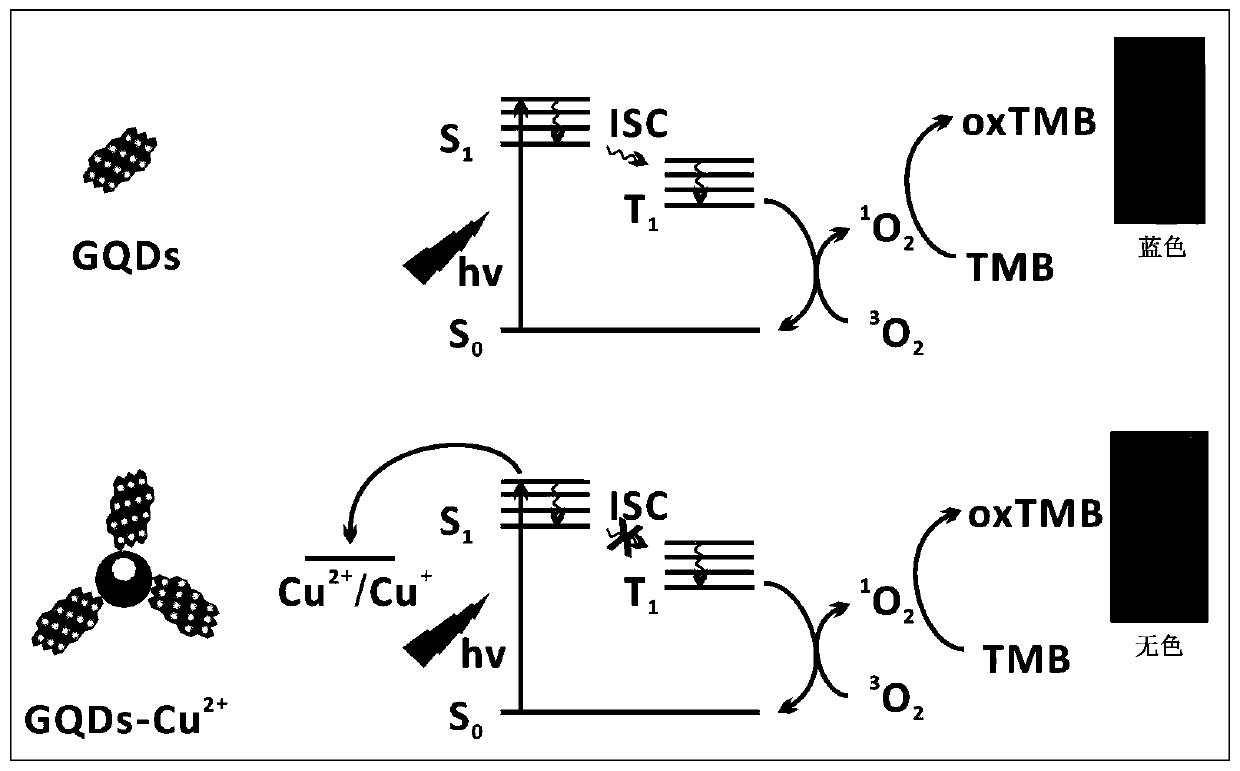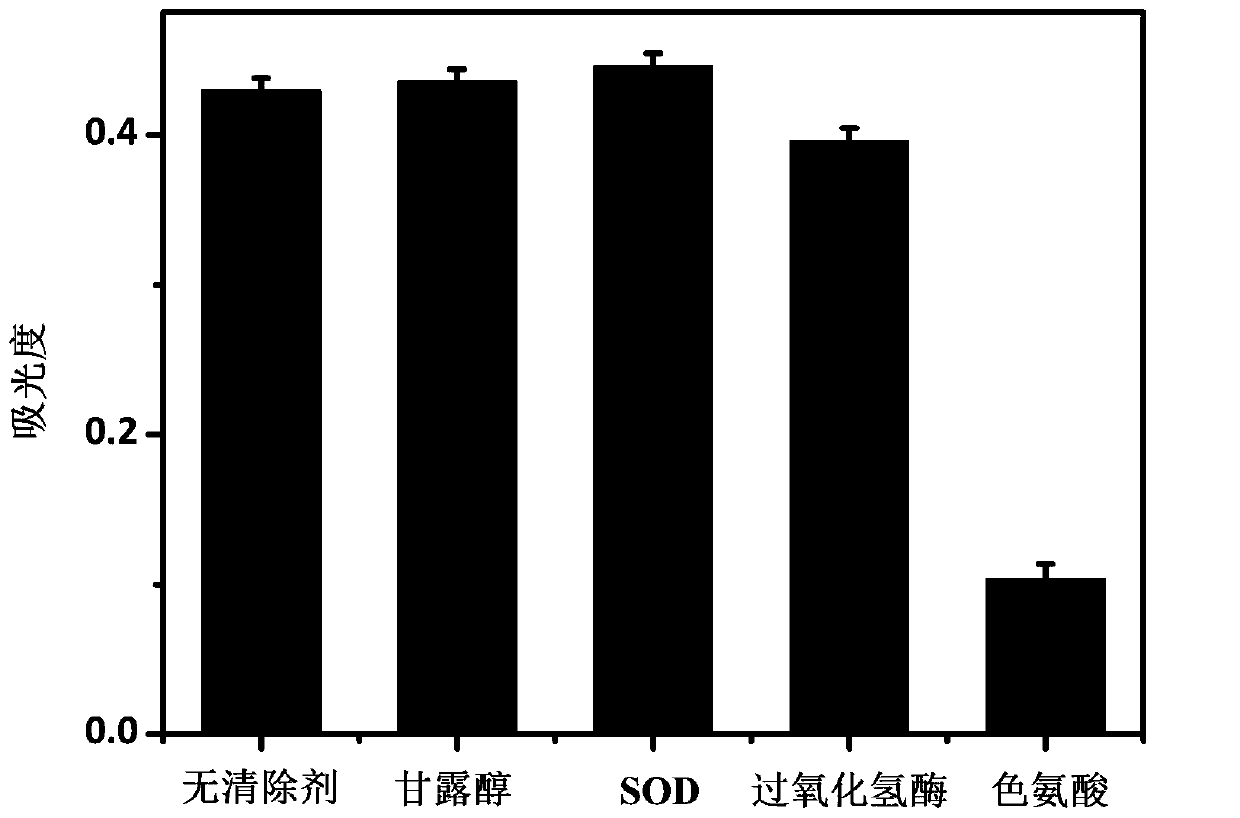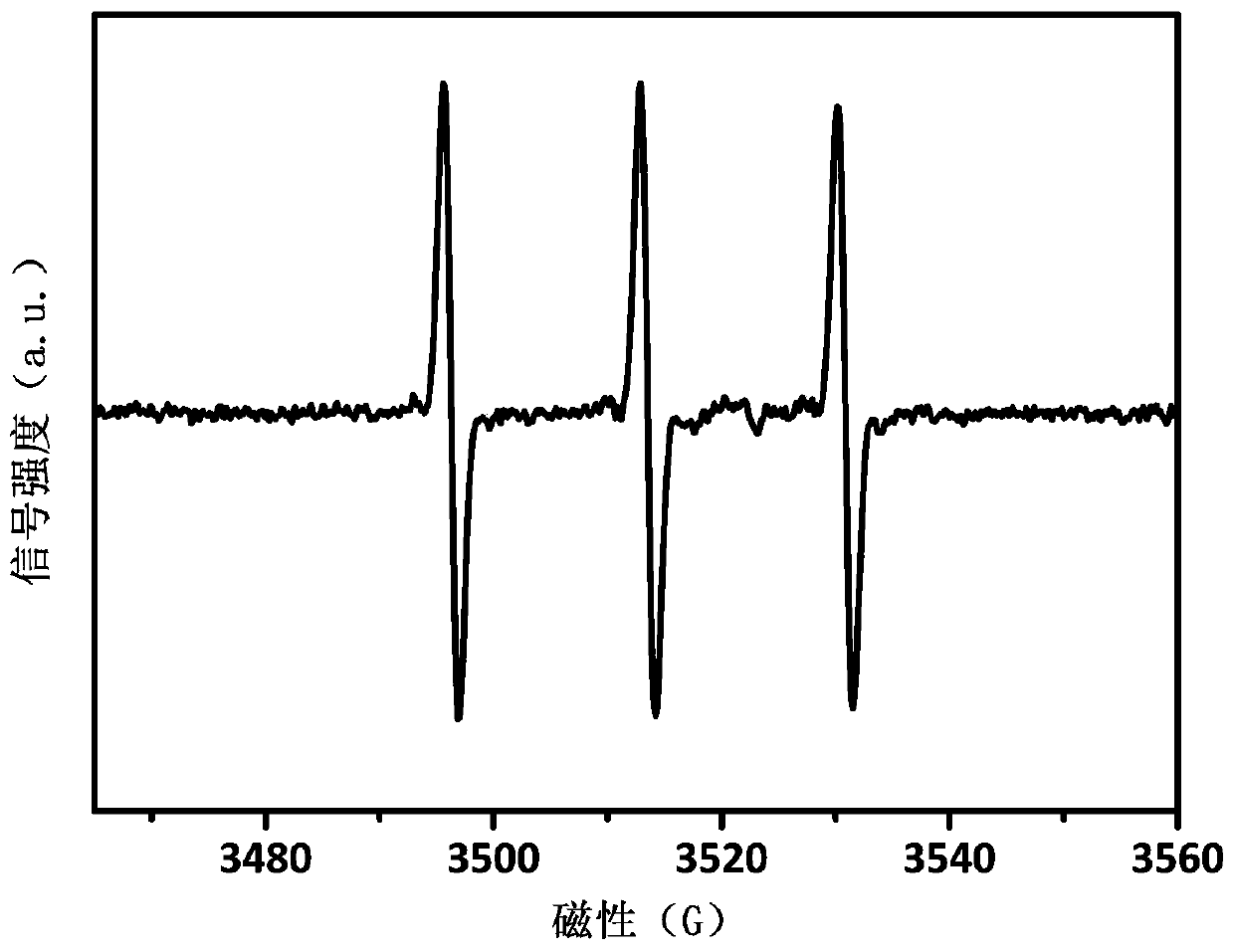Method for visually detecting Cu < 2 + > based on GQDs photocatalysis
A photocatalytic, cu2 technology, applied in the field of chemical sensing, to achieve the effect of strong sensitivity, rapid detection and simple operation
- Summary
- Abstract
- Description
- Claims
- Application Information
AI Technical Summary
Problems solved by technology
Method used
Image
Examples
Embodiment 1
[0053] The preparation of embodiment 1GQDs
[0054] Take 0.200g graphene oxide (Graphene Oxide, GO), fully dissolve in 30mL concentrated H 2 SO 4 and 10mL HNO 3 In the mixed liquid, the mixed solution A was obtained; the mixed solution A was ultrasonically treated for 2h, and stirred at 100°C for 3h, and the product A was obtained after cooling to room temperature; the product A was diluted with ultrapure water and placed on ice Na in the bath 2 CO 3 Adjust the pH to 7 to obtain a mixed solution B; filter the mixed solution B through a 0.22 μm filter membrane to remove residual GO, and then obtain a mixed solution C; place the mixed solution C in a dialysis bag with a molecular weight cut-off of 100Da Dialyzed for 2 days to remove NaNO formed during neutralization 3 and Na 2 SO 4 , to obtain a mixed solution D; the mixed solution D was placed in a dialysis bag with a molecular weight cut-off of 1000 Da for further dialysis for another 2 days to obtain the product B in t...
Embodiment 2
[0056] Example 2 Detection of Cu based on GQDs photocatalytic activity 2+ Feasibility test of
[0057] 1. Study on the photooxidation mechanism of TMB
[0058] Related studies have shown that GQDs can generate reactive oxygen species (ROS) under light exposure. In the embodiment of the present invention, in order to reveal the role of special ROS in the oxidation of TMB (tetramethylbenzidine), a ROS-specific scavenger, namely mannitol of OH, was used. 1 o 2 of tryptophan, O 2 - superoxide dismutase (SOD) and H 2 o 2 of catalase. Such as Figure 2A As shown, only the presence of tryptophan has an inhibitory effect on GQD-catalyzed photooxidation of TMB, while the other three scavengers have no significant difference, indicating that the photosensitized 1 o 2 Generation is the cause of TMB oxidation.
[0059] generated as an authentication 1 o 2 The most direct evidence, choose 2,2,6,6-tetramethylpiperidine (TEMP) as capture agent, carry out electron spin resonance ...
Embodiment 3
[0064] The optimization of embodiment 3 sensing conditions
[0065] In order to obtain the best sensing performance, the embodiments of the present invention optimize the pH of the reaction buffer (citric acid buffer), the concentration of TMB, the incubation time and the irradiation time. Taking ΔA as the detection index, ΔA (ie, A 0 -A) Indicates in the absence and presence of Cu 2+ Absorbance changes in the case of oxTMB.
[0066] (1) This embodiment explores the influence of the reaction buffer solution with a pH value of 2.5 to 6.0 on the ΔA value, and the results are as follows Figure 4A shown. Depend on Figure 4A It can be seen that the photoactivity of GQD is highly dependent on pH, and a higher ΔA can be obtained at a pH of 3.5-4.5, and preferably, the ΔA value is the highest at a pH of 4.0.
[0067] (2) Further, this example explores the influence of TMB with a concentration of 0-1.0mM on the value of ΔA, and the results are as follows Figure 4B shown. Depe...
PUM
 Login to View More
Login to View More Abstract
Description
Claims
Application Information
 Login to View More
Login to View More - R&D
- Intellectual Property
- Life Sciences
- Materials
- Tech Scout
- Unparalleled Data Quality
- Higher Quality Content
- 60% Fewer Hallucinations
Browse by: Latest US Patents, China's latest patents, Technical Efficacy Thesaurus, Application Domain, Technology Topic, Popular Technical Reports.
© 2025 PatSnap. All rights reserved.Legal|Privacy policy|Modern Slavery Act Transparency Statement|Sitemap|About US| Contact US: help@patsnap.com



